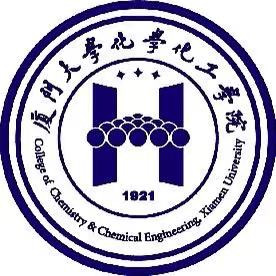https://doi.org/10.1016/j.seppur.2022.121559
CO2 can be directly hydrogenated into dimethyl ether (DME) via bifunctional catalyst that is consist of metal/metal oxide catalyst (converting CO2 into methanol) and H-ZSM-5 zeolite catalyst (converting methanol into DME). In order to develop an effective bifunctional catalyst for this purpose, an excellent metal/metal oxide catalyst to produce methanol has to be developed first. Recently, many studies have demonstrated Pd/In2O3 as an effective catalyst for the production of methanol via CO2 hydrogenation. However, there has been no attempt to investigate the potential of Pd/In2O3/H-ZSM-5 as bifunctional catalyst for the production of DME. Furthermore, the synthesis of In2O3 usually requires either toxic or expensive reagents or templating agents.
Therefore, in this study, carbonized alginate templating was introduced as a potentially green yet low-cost method for the synthesis of In2O3 and Pd/In2O3. This was done by first producing insoluble indium alginate hydrogel, which was then undergone hydrothermal reaction at various temperature and time. At the optimized hydrothermal conditions of 160 oC and 12 h, a microspherical carbonized alginate structure with In3+ chemically-anchored onto it was formed. It was then undergone calcination, whereby the carbonized alginate was removed, while the chemically-anchored In3+ was converted into In2O3. As a result, microspherical-confined nano-In2O3 was formed, whereby the localized nucleation growth can be coordinated by the chemically-anchored In3+ in the well-distributed alginate structure. It was the used to support a highly well-distributed Pd, resulting in the formation of microspherical-confined nano-Pd/In2O3 (labelled as PdIn-160-12) with high specific surface area. This facilitates the formation of more oxygen vacancy onto In2O3. As a result, PdIn-160-12 was able to produce high amount of methanol at a space time yield of 458.7 gMethanol kgcat-1 h-1, which was 803% higher than that of commercial Pd/In2O3.
Next, PdIn-160-12 was integrated with H-ZSM-5 to investigate the potential of Pd/In2O3/H-ZSM-5 as a bifunctional catalyst for the production of DME via CO2 hydrogenation. The effects of various integration manners (Dual bed, Granule mixed, Mortar mixed) and various Pd/In2O3: H-ZSM-5 (PdIn-160-12: H-ZSM-5) mass ratio on DME production were investigated. It was found that mortar mixed was able to produce the highest amount of DME, as the close proximity causes stronger ion-exchange mechanism between the catalyst components, which facilitates higher oxygen vacancy density in the bifunctional catalyst. Under the optimum Pd/In2O3: H-ZSM-5 (PdIn-160-12: H-ZSM-5) mass ratio of 4:1, the highest spacetime yield of 79.7 gDME kgcat-1 h-1 with CO2 conversion of 9% and DME selectivity of 44.1% can be obtained. In addition, the spacetime yield is able to be maintained even in 60 h on stream.
Henceforth, an effective, yet stable bifunctional catalyst consists of microspherical-confined nano-Pd/In2O3 and H-ZSM-5, with microspherical-confined nano-Pd/In2O3 component produced from green synthesized method via carbonized alginate templating for the production of DME via CO2 hydrogenation has been developed. Furthermore, this study has also successfully expanded the application of Pd/In2O3 into bifunctional catalyst. It is believed that such an approach can also be extended to different varieties of bio-materials as template, to produce different varieties of metal/metal oxide, for different varieties of catalytic reaction applications, either as a single or bifunctional catalyst.

